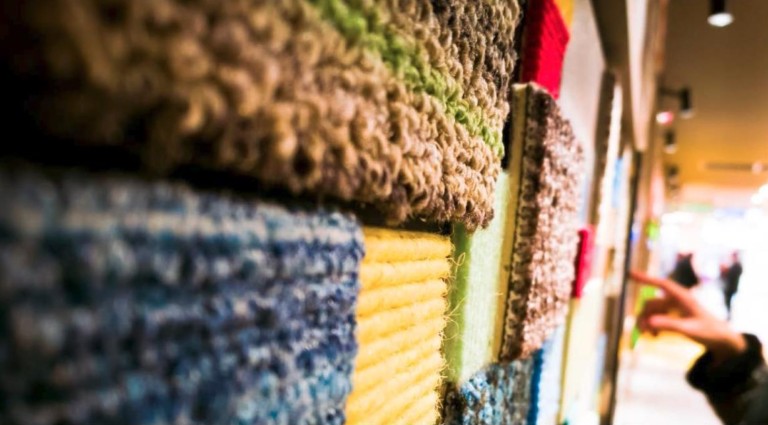When selecting carpet, choosing the right color is often the most difficult part of the process. Most people make relatively neutral choices, picking colors such as beige, taupe, gray and even off white because they blend well with just about any decor. Yet, carpets in bold colors like burgundy, deep, rich browns, regal blues and purples, soothing greens and even multi-colored patterns are not uncommon either. The interesting thing is that the color itself is not what protects a carpet from stains. Rather, it’s how the color is dyed that matters. When you know how your carpet was colored you can make more informed cleaning and spot treatment choices.
Extrusion and Coloration Many carpets, such as polyester and Olefin, are created through extrusion. This is the process of melting plastic balls of certain colors, then extruding the liquid through small holes to create strands. In this way the color goes all through the thread; it’s called “solution dyeing.” This creates the most colorfast carpets, fibers which are highly resistant to fading and bleaching because the color goes all the way through. These carpets are most often found in commercial applications, but they can be in private homes as well. One such extruded fiber, Olefin, is common in Berber style carpets. Olefin fibers are not very absorbent, so they are highly stain resistant.
Fiber & Yarn Dyeing Sometimes, the material is extruded or otherwise turned into rough fibers before color is applied. Then, various methods are used to apply dye to these fibers before they are spun into yarn. This type of dyeing provides great color penetration, but it is expensive and rarely used on carpets; it’s more common on wool and other high end fabrics. If the fiber is spun into yarn, then dyed, this is yarn dyeing, a common way that multiple colors of fibers are then woven into the carpet to make a variety of patterns, as is common in hotels and office buildings.
Print Dyeing In print dyeing the carpet is made without color variety. Then, dyes are sprayed or painted on the carpet using stencils. This is common on novelty carpets such as playrooms, daycare centers and movie theaters.
Continuous Dye The most common dyeing technique is the continuous dye method. After the yarns have been stitched into the backing material, the carpet passes through jets that spray hot dye into the face yarns. This is the fastest and most cost-effective way to dye carpet. Chances are, if you have a light to medium solid-color carpet, it was dyed in this way.
Keeping Carpet Looking Good The dyeing process of a carpet determines how it resists color loss, fading and bleaching. An experienced cleaning company will know what chemicals and processes to use in order to get the best cleaning and maintenance results from a particular carpet. Using the wrong cleaning agents or processes could result in fading, loss of luster and other issues, so be sure to have your carpets cleaned at least semi-annually by Bluegreen.
